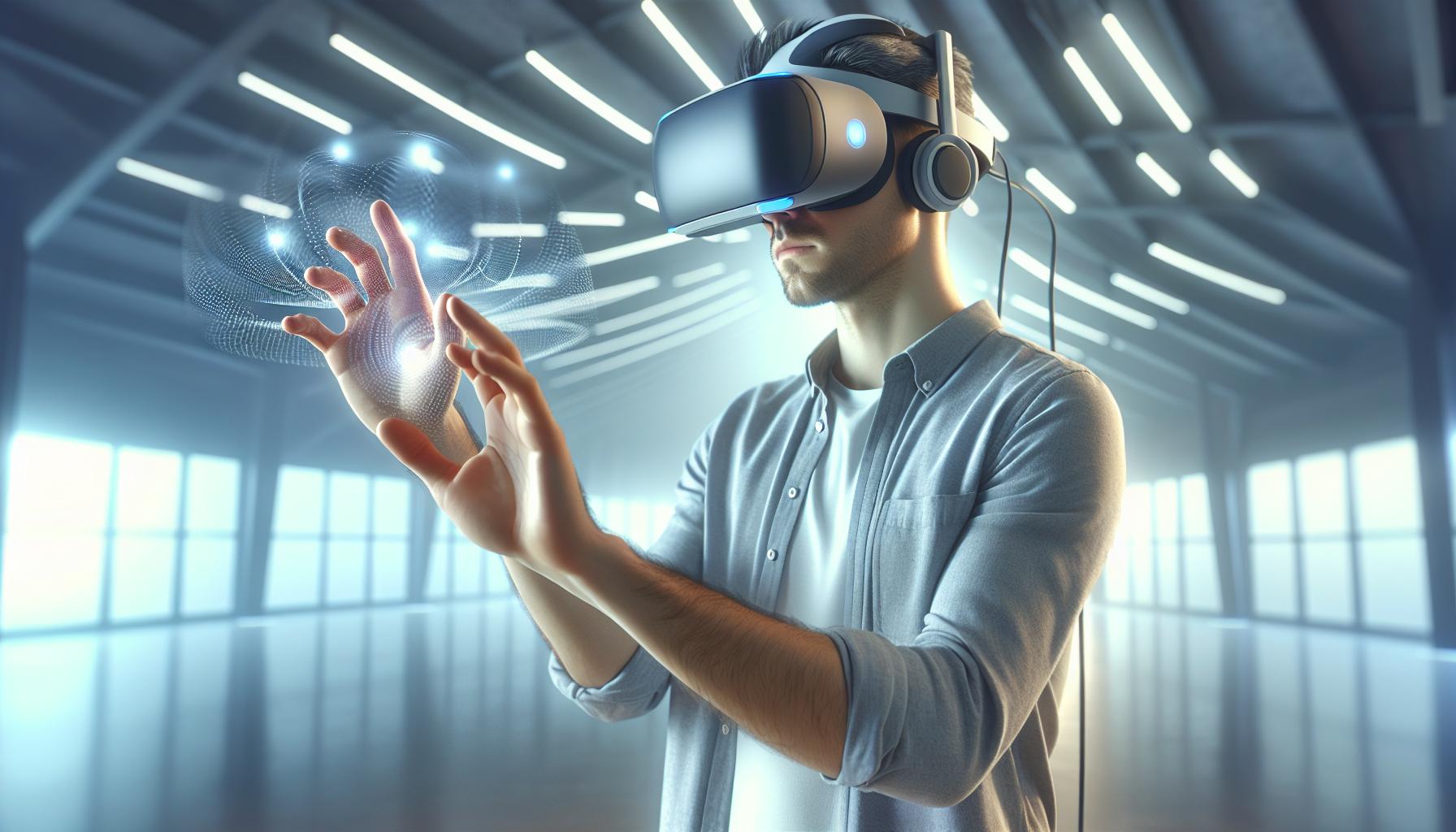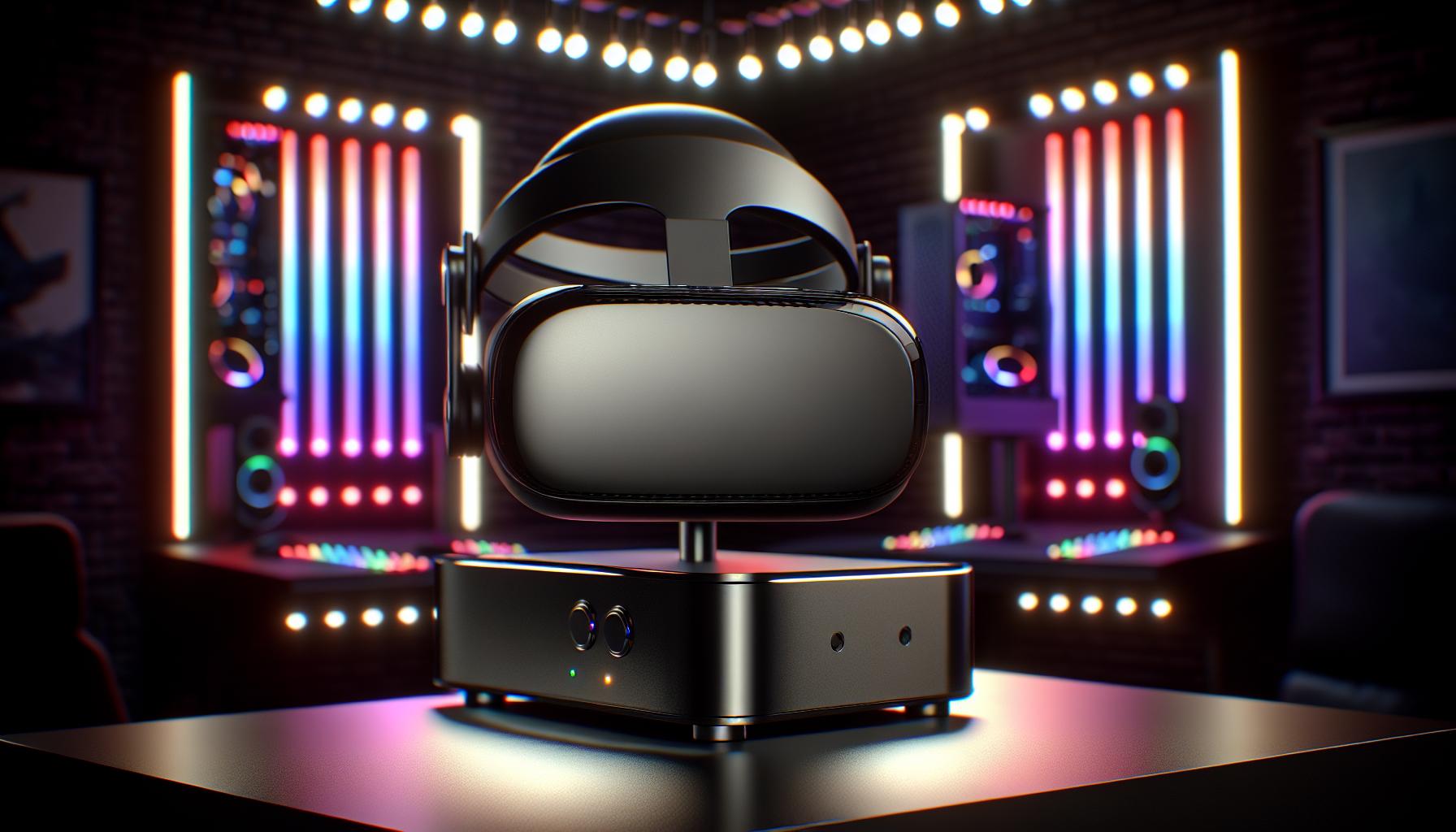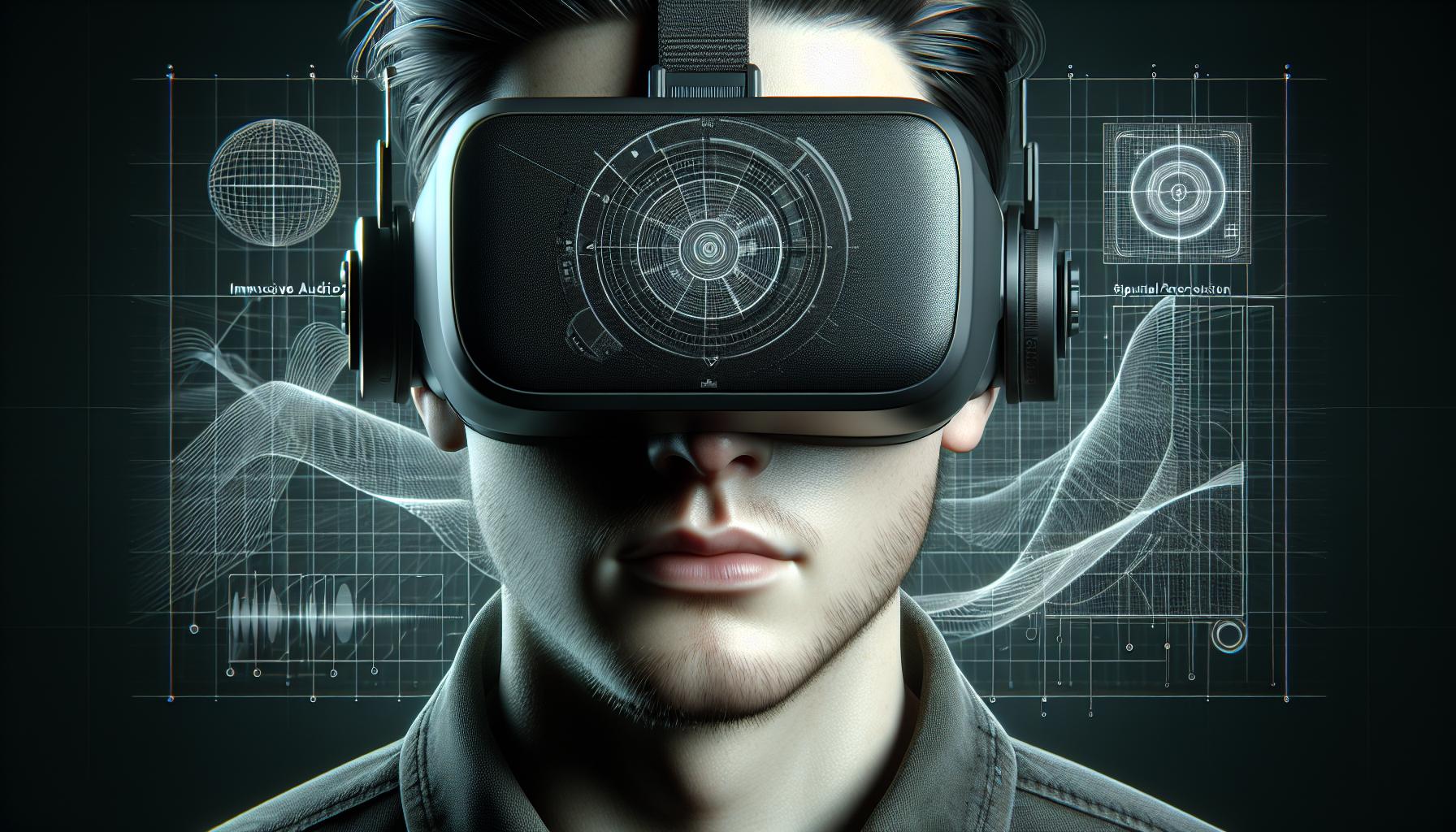Virtual reality headsets have transformed from science fiction dreams into mind-bending reality. These remarkable devices transport users into immersive digital worlds where anything is possible – from fighting dragons to exploring distant planets while sitting on the couch in pajamas.
At their core VR headsets combine sophisticated display technology motion sensors and powerful processors to create convincing 3D environments that respond to head movements in real-time. When someone straps on a VR headset they’re essentially wearing a mini theater that tricks their brain into believing they’re somewhere else entirely. It’s like having an IMAX screen wrapped around your face but way cooler and without the sticky floors.
How Does Virtual Reality Headset Work
Virtual reality technology combines hardware components with specialized software to create immersive digital environments. The integration of these elements enables users to experience three-dimensional worlds through synchronized visual feedback motion tracking.
Key Components of VR Headsets
Modern VR headsets incorporate five essential components that work together to deliver immersive experiences:
- Processing Unit: A powerful microprocessor handles graphics rendering real-time data processing.
- Motion Sensors: Accelerometers gyroscopes track head movements position with 6 degrees of freedom.
- Controllers: Hand-held devices with haptic feedback enable interaction with virtual objects.
- Audio System: Spatial audio drivers create directional sound for enhanced immersion.
- Connectivity Ports: High-speed interfaces transfer data between the headset computing devices.
Display and Optics Systems
The display system in VR headsets uses dual OLED or LCD screens to present separate images for each eye. These screens feature:
| Display Specification | Technical Detail |
|---|---|
| Resolution | 2160 x 2160 pixels per eye |
| Refresh Rate | 90-120 Hz |
| Field of View | 90-120 degrees |
| Pixel Density | 500-600 PPI |
Advanced fresnel lenses magnify the display output while reducing optical distortion. The optics system includes eye-tracking sensors that adjust image focus based on pupil position creating realistic depth perception through stereoscopic rendering.
Motion Tracking and Sensors

Motion tracking technology enables VR headsets to replicate real-world movements in virtual environments through integrated sensors and cameras. These components work together to create a seamless, responsive experience that matches user actions with virtual interactions.
Head Position Tracking
VR headsets employ Inertial Measurement Units (IMU) consisting of accelerometers gyroscopes to detect head movements at 1000 times per second. Inside-out tracking cameras on the headset capture the surrounding environment identifying fixed reference points to determine spatial positioning. The IMU sensors measure three axes of rotation (pitch yaw roll) plus three axes of movement (forward/back left/right up/down) creating six degrees of freedom tracking. This precise tracking system maintains accurate head position data with less than 20 milliseconds of latency eliminating motion sickness for most users.
Hand Controller Tracking
Modern VR controllers incorporate infrared LEDs optical sensors motion tracking chips to translate hand movements into virtual actions. Each controller contains positional markers that emit signals detected by the headset’s cameras tracking hand positions with submillimeter accuracy. The controllers feature capacitive touch sensors analog sticks buttons that register finger positions grip strength providing natural interaction methods. Advanced haptic motors in the controllers generate varied vibration patterns matching virtual textures impacts enhancing immersion through tactile feedback.
Visual Processing and Graphics

Visual processing in VR headsets transforms digital content into immersive 3D environments through sophisticated graphics rendering pipelines. The system processes visual data in real-time to create seamless virtual experiences that respond to user movements.
Frame Rates and Refresh Rates
Modern VR headsets operate at refresh rates between 90Hz to 120Hz to deliver smooth motion in virtual environments. The graphics processing unit (GPU) generates frames at matching rates to prevent visual artifacts such as screen tearing or stuttering. High frame rates reduce motion sickness by minimizing the delay between head movement and visual feedback to under 20 milliseconds.
| Refresh Rate | Impact on VR Experience |
|---|---|
| 90Hz | Standard smooth performance |
| 120Hz | Enhanced motion clarity |
| <90Hz | Increased motion sickness risk |
Field of View Considerations
The field of view (FOV) in VR headsets determines how much of the virtual world users see at any moment. Current VR headsets offer horizontal FOV ranges from 90 to 120 degrees, compared to the human eye’s natural 200-degree peripheral vision. Wider FOV creates more immersive experiences by filling more of the user’s vision with virtual content.
| FOV Type | Typical Range |
|---|---|
| Horizontal | 90-120° |
| Vertical | 100-110° |
| Binocular | 85-95° |
Immersive Audio Technology

Virtual reality headsets integrate sophisticated audio processing systems that create three-dimensional soundscapes matching the virtual environment. The technology enhances immersion by simulating how sound travels through space, just as it does in the real world.
Spatial Audio Processing
Spatial audio processing replicates natural sound behavior using Head-Related Transfer Functions (HRTF) algorithms. These algorithms calculate sound variations based on the distance between audio sources from each ear at 1000 times per second. Modern VR headsets incorporate binaural audio recording techniques to capture sound from two points, mimicking human ear positions. The audio system processes multiple sound channels simultaneously through positional tracking to adjust volume levels based on the user’s head orientation. Advanced VR systems support up to 7.1 surround sound configurations with distinct audio zones:
- Front left channel
- Front right channel
- Center channel
- Left surround
- Right surround
- Back left surround
- Back right surround
- Low-frequency effects
The audio latency in high-end VR headsets stays below 20 milliseconds to maintain synchronization between visual movement and sound delivery. Audio reflection mapping technology simulates sound bouncing off virtual surfaces to create realistic acoustic environments.
Comfort and Ergonomic Design
VR headsets prioritize user comfort through strategic design elements that enable extended gaming sessions. Modern headsets incorporate adjustable features to accommodate different head sizes facial structures.
Weight Distribution and Face Interface
VR headsets balance weight distribution through a counterweighted design that places heavier components at the back of the head. The front housing contains display panels optical systems while rear-mounted battery packs create optimal center of gravity. Premium headsets like the Meta Quest Pro use curved battery cells that conform to head shape reducing strain on neck muscles.
The face interface uses moisture-wicking foam materials with varying density zones to minimize pressure points around the eyes nose bridge. Interchangeable facial cushions accommodate different face shapes with antimicrobial treatments preventing bacterial growth from extended use. Quick-adjustment mechanisms on the side straps temple arms allow users to fine-tune the headset position without removing it maintaining proper alignment of optical components with the eyes.
| Component | Weight Distribution |
|---|---|
| Front Housing | 250-350g |
| Rear Battery | 150-200g |
| Face Interface | 50-75g |
| Total Weight | 450-625g |
Wireless vs Tethered Operation
Virtual reality headsets operate in two distinct configurations: wireless and tethered systems. Each configuration offers unique advantages for different use cases.
Wireless Operation
Standalone VR headsets contain integrated processing units that eliminate the need for external connections. Meta Quest 3 processes graphics data internally using a Snapdragon XR2 Gen 2 chip operating at 2.7GHz. Battery life ranges from 2 to 3 hours on wireless headsets during active gameplay.
| Wireless VR Specs | Values |
|---|---|
| Processing Speed | 2.7 GHz |
| Battery Duration | 2-3 hours |
| Tracking Range | 15×15 feet |
| Connection Type | Wi-Fi 6E |
Tethered Operation
Tethered VR headsets connect to external computing devices through high-bandwidth cables. The Valve Index transfers data at 45Gbps through a DisplayPort 1.2 connection delivering ultra-high resolution graphics at 144Hz refresh rates. PC-connected systems provide enhanced graphical capabilities through dedicated graphics cards.
| Tethered VR Specs | Values |
|---|---|
| Data Transfer Rate | 45 Gbps |
| Max Refresh Rate | 144 Hz |
| Cable Length | 16 feet |
| Power Draw | 12W |
Connection methods include USB-C DisplayPort Alt Mode HDMI cables while power delivery occurs through dedicated power cables. The tethered setup maintains consistent performance without battery limitations though cable management impacts mobility.
Power and Battery Management
Modern VR headsets balance power consumption with performance optimization through sophisticated battery management systems. Standalone VR headsets utilize lithium-ion batteries ranging from 3640mAh to 4500mAh capacity. Fast charging technology enables 0% to 80% battery replenishment in 60 minutes through USB-C connections.
| VR Headset Type | Battery Life | Charging Time | Power Output |
|---|---|---|---|
| Standalone | 2-3 hours | 2.5 hours | 15W |
| Tethered | N/A | N/A | 12W-27W |
Power management algorithms dynamically adjust display brightness based on ambient light conditions. Display panels consume 60% of total power usage during operation. Integrated processors automatically scale performance to conserve energy during less demanding applications.
Active thermal management systems include:
- Temperature sensors monitoring battery heat levels
- Variable speed cooling fans maintaining optimal operating temperatures
- Thermal throttling protection preventing overheating damage
- Heat dissipation elements directing warmth away from critical components
Battery preservation features incorporate:
- Sleep mode activation after 15 minutes of inactivity
- Background app suspension reducing unnecessary power drain
- Low battery warnings at 15% charge remaining
- Emergency data saving protocols at 5% battery level
Tethered VR headsets draw power directly from gaming PCs or consoles through specialized cables delivering consistent voltage. Power delivery systems maintain stable current flow while preventing voltage spikes through integrated surge protection circuits. USB power delivery protocols enable up to 27W power transfer through standardized connections.
Mechanism of VR Headsets
Virtual reality headsets represent a remarkable fusion of cutting-edge technologies working seamlessly to create immersive digital experiences. From sophisticated motion tracking and high-resolution displays to spatial audio and ergonomic design these devices continue to push the boundaries of what’s possible in digital interaction.
As VR technology evolves users can expect even more advanced features improved comfort and enhanced immersion. Whether it’s through standalone wireless systems or powerful tethered setups VR headsets are transforming how people experience digital content gaming and professional applications.
The future of VR headsets looks promising with ongoing developments in display technology motion tracking and power efficiency paving the way for even more incredible virtual experiences.



